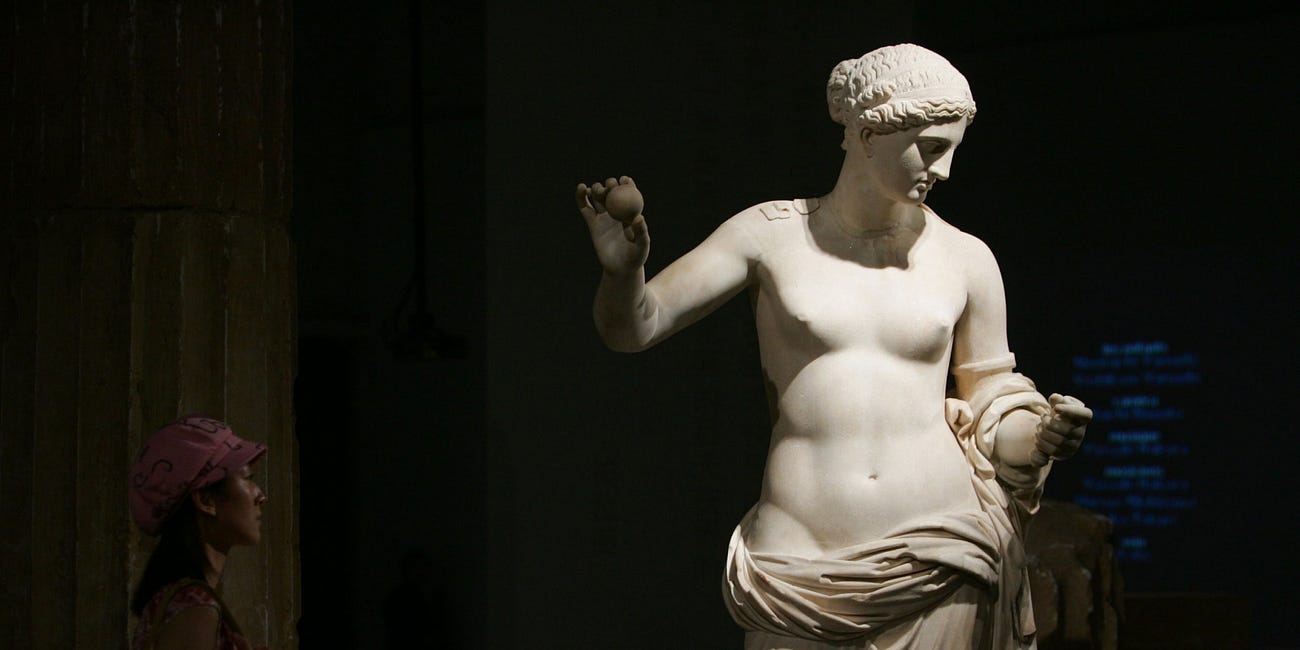Ishtar to Aphrodite

Aphrodite is one of my favorite figures to study in mythology. A bit of a minority opinion. Many people, particularly women, chose more “bad-ass” goddesses to read about. Athena and Artemis are seen today as definitions of girl boss in the ancient Greek Pantheon. They’re the powerhouses girls are taught to look up to. Aphrodite is tossed to the side as a shallow character. Cheats on her spouse. Only cares about her looks. Flighty. Selfish. Just another production of a patriarchal society.
If that is your impression of the Greek goddess of love, I do apologize as I am about to burst your bubble.
Aphrodite is the Greekified version of a powerful, thousands of year-old deity worshiped throughout the Mediterranean world starting with her earlies incarnation as Ishtar of Babylon.
Myths and cultures are not created in a vacuum. Civilizations take, borrow, and adapt concepts and ideas from their neighbors. This Mediterranean Goddess (Mediterranean Goddess is how I will refer to the overall concept of this deity from now on when not talking about a specific version or incarnation) was worshiped in multiple cultures as a being of love, beauty, sexuality, fertility, power, and war. Each culture that encountered this goddess reshaped her to fit their views and beliefs, but as we will explore with Aphrodite specifically, some prevailing traits while hidden can’t help but shine through.
Our journey will start in Ancient Babylon with Ishtar, the earliest known version of the Mediterranean Goddess. After the fall of Babylon, the goddess moves across the Middle East towards the Mediterranean, becoming the Phoenician goddess Astarte. The Phoenicians then expanded their trade routes to the island of Kythera where she was reborn as Aphrodite. The new goddess then made her way to the nearby mainland and took the Greek world by storm. The Mediterranean Goddess was reinvented one last time as Venus when the Romans encountered the Greeks during their expansions and conquests.
Over the next few months, I will be focusing on each evolution of this goddess. We will explore what made each incarnation unique as well as the enduring traits that remain from culture to culture.
Ishtar:
Ishtar: Goddess of Mesopotamia
The first stop on our journey is in Mesopotamia where references to Ishtar (or Esh-Tar) stretch back to around 2400 BCE. Ishtar is also linked to a Sumerian goddess called Inanna, mentions of who stretch back to around 3000 BCE. This makes our Mediterranean goddess possible over 5000 years old.
Astarte:
Astarte: Goddess of Canaan
As we move to the next stop tracking the evolution of the Mediterranean Goddess Astarte is the form we know the least about. She was known by many other names such as Ashtar, Ashtart, Ashtoret, and Ashtaroth. The difference in her name and image from region to region makes it harder to find information about her. She was a goddess of war and sexual love…
Aphrodite:
Aphrodite: Goddess of Greece
The most well-known and documented incarnation of our Mediteranian Goddess is Aphrodite. Aphrodite was the Greek Goddess of love, beauty, and sex. There are different myths depicting her birth. In some, she is the daughter of Zeus and in others, she is born from the castrated remains of the titan Ouranous that were thrown into the sea (Either way her fa…
Venus: March 10th
Stay tuned to learn more about this ancient and powerful Mediterranean Goddess. Maybe I’ll convert you to the cult of Aphrodite along the way.




